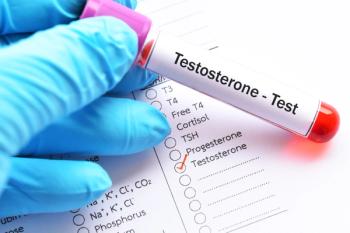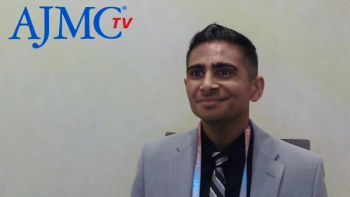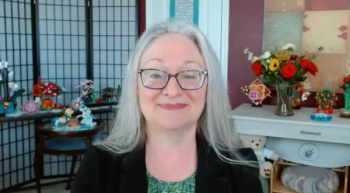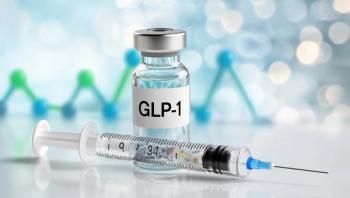
Access, Equity, and Quality of Life: Managed Care and Myeloma
Key Takeaways
- The PERSEUS trial supports daratumumab addition to VRd for improved progression-free survival and quality of life in multiple myeloma patients.
- Hematology/oncology trainees tend to relocate away from areas with high non-Hispanic Black populations, highlighting regional disparities in cancer care.
Abstracts presented Saturday at the American Society of Hematology in San Diego, California, included studies on access to care and an analysis of young physicians' relocation patterns as they transition to fellowship and attending positions.
Beyond the clinical findings presented at the 66th American Society of Hematology (ASH) Annual Meeting & Exposition, sessions on multiple myeloma; diversity, equity, and inclusion; and outcomes research highlighted abstracts focused on key topics in managed care, from factors that affect access to treatment to those that impact where clinicians set up practice.
HRQOL Results in PERSEUS Support Quadruplet as Standard
Pieter Sonneveld, MD, of the Erasmus MC Cancer Institute in Rotterdam, the Netherlands, last year presented the main findings of the
On Saturday, Sonneveld presented results from questionnaires completed by patients in the phase 3 trial, which aimed to measure health-related quality of life (HRQOL), a secondary end point in PERSEUS. Patients completed 2 questionnaires on quality of life, the 30-question EORTC Core Quality of Life questionnaire (EORTC QLQ-C30) and the EuroQoL EQ-5D descriptive system and the EQ visual analogue scale (EQ VAS). They also completed 1 questionnaire on myeloma-specific symptoms, EORTC-MY-20.1
Baseline characteristics were well-balanced between the 2 arms of PERSEUS. At the time of clinical cutoff, follow-up was 47.5 months. At maintenance cycle 34, there were 254 patients in the daratumumab group and 164 in the control arm on study. Results showed the following1:
- Compliance on the questionnaires was above 94% on all 3 tests in both arms at baseline. It remained above 75% on all 3 tests in both arms at maintenance cycle 34, with slightly higher participation in the daratumumab arm.
- Patients in the daratumumab arm saw improvement in HRQOL between baseline and the start of maintenance that was intact through the start of maintenance cycle 34 and comparable on most measures with patients in the control arm.
- Proportions of patients with clinically meaningful improvements in HRQOL at each cycle up to were similar across treatment arms: On the EORTC QLQ-C30, overall health, 37.8% vs 36.8%; physical functioning, 39.5% vs 41.1%; pain, 48.9% vs 50.0; fatigue, 46.5% vs 53.1%; EORTC-MY-20 disease symptoms, 47.3% vs 49.1%; EQ-5D-5L VAS, 49.7% vs 43.9%.
“Together with favorable efficacy outcomes data,” the authors wrote, the HRQOL data support the addition of daratumumab to a VRd triplet “as a new standard of care for [transplant-eligible] newly diagnosed multiple myeloma.”1
As Training Progresses, Cancer Doctors Move Away From Black Patients
Researchers from Georgia, located at Wellstar Spalding Medical Center in Griffin and the Medical College of Georgia in Augusta, have created data to support a pattern observed anecdotally: As trainees in hematology and oncology progress through residency, fellowship, and their first attending positions, they migrate away from areas that serve high numbers of non-Hispanic Black patients. Among the factors that contribute to
As the authors note, “geographical distribution of hematology/oncology fellowship graduates is crucial for shaping health care delivery and highlighting regional health disparities in cancer care.”
Presented by Vishwanath Anil, MD, of Wellstar, the study digs into patterns of movement of these young physicians and identifies the career pivot points where many opt to move to less diverse locations.2
For this study, the investigators analyzed transitions of 703 graduates of 65 accredited hematology and oncology fellowship programs for the period 2019 to 2022 that featured alumni data on their websites. The study team labeled 3 key transitions in medical training:
- T1: medical school to residency
- T2: residency to fellowship
- T3: followship to first attending position.
They measured geographic relocation by straight-line distance and used US Census and zip code data to evaluate retention, as well as racial and socioeconomic data for locations. They divided the country into 4 regions to assess retention. Results showed the following2:
- Distance traveled: During T1, trainees traveled 674 miles, which decreased to 491 miles in T2 and fell to 450 miles in T3 (P < .001).
- Best retention: Regional retention was highest in the Western region from T1 (71.4%) to T2 (83%) to T3 (75.8%).
- Rural movement: Trainees moved less to rural areas during T1 and T2, but more to rural areas in T3. Fellows traveled less distance in T1 if they came from a rural region (P < .02).
- Wealth determinants: Investigators found that “unemployment rates were directly correlated with greater miles traveled in all transitions,” that trainees migrated to areas with higher household incomes in their first transition and this trend continued as careers progressed.
- Racial determinants: The investigators determined, “There is a clear trend among trainees to move away from the non-Hispanic black population as they progress from T1 to T2 to T3.”
The authors concluded that trainees may seek to diversify their educational experiences early in their training, but as time moves on, their preferences shift to “establishing roots,” possibly influenced by professional, personal, or network connections.
They pattern of moving away from and then back to rural areas likely reflects a similar dynamic, they wrote, where “early training is sought in urban centers with more resources, but eventual practice might be to areas with lower cost of living, higher physician demand and higher salaries which are classified as more rural areas.”
The patterns tracked call for policy solutions to address a workforce that is not moving to the areas of greatest need. “These findings underscore the need for targeted policies to mitigate geographic, socioeconomic, and racial inequality, ensuring equitable access to quality cancer care across all regions,” they write.
Mental Health Issues, Financial Limits Are Barriers to Transplant
Mental health challenges, financial pressures, and not having a caregiver at home are among the reasons patients delayed allogeneic hematopoietic cell transplantation (HCT) when diagnosed with acute myeloid leukemia (AML), according to a study conducted by Knight Cancer Institute, Oregon Health & Science University (OHSU) in Portland, Oregon.
Although being referred early for HCT is linked to improved survival for adults with intermediate and high-risk AML, many patients have delays in accessing this curative therapy for reasons unrelated to their disease. For this reason, investigators at OHSU sought to gain a deeper understanding of what keeps patients with AML who are clinically eligible from progressing to transplant.
The analysis involved 369 patients with HCT delays from 2019 through 2022. Through evaluations by social workers, the team was able to uncover multiple reasons, with many patients affected by more than 1 factor. Results showed the following3:
- Median age of the group studied was 63, with a range of 18 to 95 years; 47% of the patients were 65 years or older.
- 43% were female, and 10% were of a race or ethnicity other than White, non-Hispanic. Almost half (45%) were from nonmetropolitan areas, with 46% living more than 60 miles from the transplant center.
- 44% of the patients were or below the national poverty level; 39% of those below age 65 had public insurance, and 91% of those 65 years and older had public insurance. Uninsured accounted for 2.5%.
- For 153 patients (41%), 1 or more social determinants of health (SDOH) barriers were identified. The most common reasons listed were “psychiatric disorders interfering with daily living” (14%), financial stressors (12%), substance dependence (9%), and lack of a caregiver (7%).
Investigators reported that referral for human leukocyte antigen (HLA) typing was completed for 42% of the patients. The median time was 46 days from diagnosis, with a range of 0 to 280 days; 21% of the patients had HLA completed within 6 weeks of diagnosis.
HCT consults were completed for 45% of patients; the median time to HCT consultation was 58 days, with a range of 0 to 483 days; of those who completed consults, 73% proceeded to HCT with a median of 154 days from diagnosis, and a range of 64 to 1030 days.
The documented reasons for not having HLA typing or HCT consults were disease progression (37%), oncologist determined not indicated (32%), comorbidities (16%), patient wishes (8%), and advanced age (4%). Nondisease related factors that were associated with reduced likelihood of proceeding to HCT were being older than 70 years and not having private insurance, while factors such as gender, race/ethnicity, living in a nonmetropolitan or poverty area, being a long distance to the transplant center, and SDOH were not statistically significant.
References
- Sonneveld P, Dimopoulos MA, Boccadoro M, et al. Health-related quality of life in transplant-eligible patients with newly diagnosed multiple myeloma: data from the PERSEUS trial of subcutaneous daratumumab combined with bortezomib, lenalidomide, and dexamethasone (D-VRd). Presented at: 66th American Society of Hematology Annual Meeting & Exposition; December 7-10, 2024; San Diego, CA. Abstract 2000.
- Anil V, Patel R, Nulu C, Vuppala R. Unveiling regional disparities in cancer care—analysis of the geographical journey and relocation patterns of hematology/oncology fellowship graduates. Presented at: 66th American Society of Hematology Annual Meeting & Exposition; December 7-10, 2024; San Diego, CA. Abstract 2443.
- Khare S, Cook RJ, Desai A, et al. Impact of social determinants of health on access to blood and marrow transplantation for acute myeloid leukemia. Presented at: 66th American Society of Hematology Annual Meeting & Exposition; December 7-10, 2024; San Diego, CA. Abstract 2292.
Newsletter
Stay ahead of policy, cost, and value—subscribe to AJMC for expert insights at the intersection of clinical care and health economics.















































